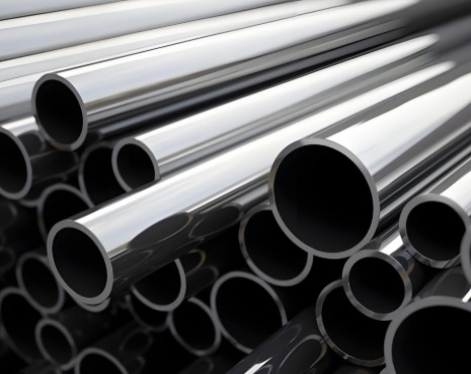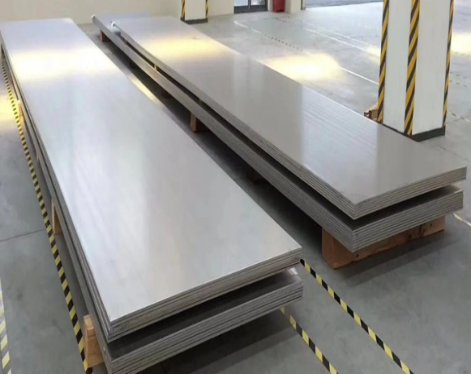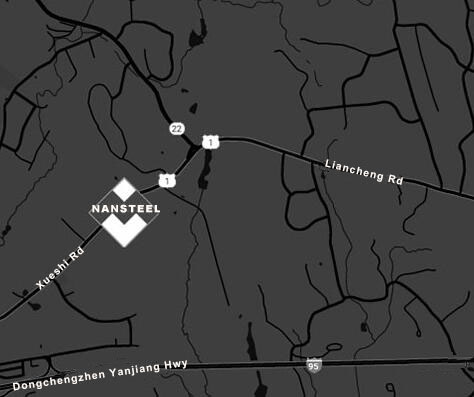When it comes to choosing the right type of steel tubing, understanding the difference between mechanical tubing and structural tubing is crucial. Although they may appear similar, these two types serve very different purposes and are manufactured to meet distinct requirements.
What is mechanical tube?
Mechanical tubing is used in mechanical and light structural applications, manufactured to meet specific requirements for end use, tolerances, and chemical composition. Unlike standard pipe, it offers greater property uniformity throughout the tube. While it can be made to standard specifications, it's often produced to typical properties—mainly focusing on yield strength based on size and wall thickness. In some cases, especially those involving severe forming, yield strength may not be specified, and the tubing is simply made “fit for use.” Mechanical tubing serves a wide range of structural and non-structural applications.
What is structural tube?
Structural tubing is specifically engineered for load-bearing and structural purposes. It is commonly used in construction, bridges, buildings, towers, and frameworks where strength and structural integrity are critical. Unlike mechanical tubing, exact dimensions or surface finishes are less of a priority.
Common standards
Mechanical tube:
ASTM A513 (Types 1 & 2):
Type 1: Hot-rolled, electric-resistance welded (ERW)
Type 2: Cold-rolled, ERW — tighter tolerances and better surface finish
ASTM A519:
Seamless mechanical tubing, cold-drawn or hot-finished
Custom Specifications:
Tubes may be produced to customer-defined chemical, dimensional, or performance requirements
Structural tube:
ASTM A500 (Grades A, B, C, D):
Cold-formed welded and seamless carbon steel tubing
Available in round, square, and rectangular shapes
Most commonly used for structural applications in North America
ASTM A1085:
Higher performance alternative to A500
Improved mechanical properties, tighter tolerances, and better weldability
ASTM A847:
Weathering steel with enhanced corrosion resistance (used in outdoor structures)
CSA G40.21 / EN 10219:
Canadian and European equivalents for structural hollow sections

Size range
Mechanical tube:
Outer Diameter (OD): Typically from 0.5" to 12" (12.7 mm to 304.8 mm)
Wall Thickness: Varies by application; can range from thin-wall to heavy-wall tubing
Length: Standard and custom cut lengths available
Structural tube:
OD (round): Typically 0.5" to 16" (12.7 mm to 406.4 mm)
Wall Thickness: From light to heavy gauge, based on application needs
Surface finish
Mechanical tube:
Cold-drawn or hot-rolled
Available with smooth, clean surfaces for enhanced machinability and coating compatibility
Structural tube:
Hot-rolled or ERW; surface finish less critical
Applications
Mechanical tube
Mechanical tube is used in applications that require precision, tight tolerances, and specific mechanical properties. It is commonly found in:
Automotive components (e.g., drive shafts, steering columns)
Industrial machinery and equipment
Hydraulic and pneumatic systems
Furniture frames and supports
Agricultural implements and tools
These applications rely on the tubing’s machinability, formability, and consistent dimensional accuracy.
Structural Tube
Structural tubing is designed for load-bearing and structural support in construction and engineering projects. Typical uses include:
Building frameworks (columns, beams, trusses)
Bridges and highway structures
Towers, poles, and sign supports
Industrial platforms and walkways
Infrastructure and large-scale steel structures
Its strength and ability to withstand heavy loads and environmental stress make it ideal for structural integrity and safety.
Read more: Mechanical Tube Size
What is mechanical tube?
Mechanical tubing is used in mechanical and light structural applications, manufactured to meet specific requirements for end use, tolerances, and chemical composition. Unlike standard pipe, it offers greater property uniformity throughout the tube. While it can be made to standard specifications, it's often produced to typical properties—mainly focusing on yield strength based on size and wall thickness. In some cases, especially those involving severe forming, yield strength may not be specified, and the tubing is simply made “fit for use.” Mechanical tubing serves a wide range of structural and non-structural applications.
What is structural tube?
Structural tubing is specifically engineered for load-bearing and structural purposes. It is commonly used in construction, bridges, buildings, towers, and frameworks where strength and structural integrity are critical. Unlike mechanical tubing, exact dimensions or surface finishes are less of a priority.
Common standards
Mechanical tube:
ASTM A513 (Types 1 & 2):
Type 1: Hot-rolled, electric-resistance welded (ERW)
Type 2: Cold-rolled, ERW — tighter tolerances and better surface finish
ASTM A519:
Seamless mechanical tubing, cold-drawn or hot-finished
Custom Specifications:
Tubes may be produced to customer-defined chemical, dimensional, or performance requirements
Structural tube:
ASTM A500 (Grades A, B, C, D):
Cold-formed welded and seamless carbon steel tubing
Available in round, square, and rectangular shapes
Most commonly used for structural applications in North America
ASTM A1085:
Higher performance alternative to A500
Improved mechanical properties, tighter tolerances, and better weldability
ASTM A847:
Weathering steel with enhanced corrosion resistance (used in outdoor structures)
CSA G40.21 / EN 10219:
Canadian and European equivalents for structural hollow sections

Size range
Mechanical tube:
Outer Diameter (OD): Typically from 0.5" to 12" (12.7 mm to 304.8 mm)
Wall Thickness: Varies by application; can range from thin-wall to heavy-wall tubing
Length: Standard and custom cut lengths available
Structural tube:
OD (round): Typically 0.5" to 16" (12.7 mm to 406.4 mm)
Wall Thickness: From light to heavy gauge, based on application needs
Surface finish
Mechanical tube:
Cold-drawn or hot-rolled
Available with smooth, clean surfaces for enhanced machinability and coating compatibility
Structural tube:
Hot-rolled or ERW; surface finish less critical
Applications
Mechanical tube
Mechanical tube is used in applications that require precision, tight tolerances, and specific mechanical properties. It is commonly found in:
Automotive components (e.g., drive shafts, steering columns)
Industrial machinery and equipment
Hydraulic and pneumatic systems
Furniture frames and supports
Agricultural implements and tools
These applications rely on the tubing’s machinability, formability, and consistent dimensional accuracy.
Structural Tube
Structural tubing is designed for load-bearing and structural support in construction and engineering projects. Typical uses include:
Building frameworks (columns, beams, trusses)
Bridges and highway structures
Towers, poles, and sign supports
Industrial platforms and walkways
Infrastructure and large-scale steel structures
Its strength and ability to withstand heavy loads and environmental stress make it ideal for structural integrity and safety.
Read more: Mechanical Tube Size









